The festivities in honor of Jesús Nazareno are the most important religious festivities in Xàbia and the oldest. Despite the fact that the patron saint of the town is San Sebastián; The Festivities of Jesús Nazareno are the ones with the greatest popular roots and for which their neighbors show the most devotion.
Next you have an index with all the points that we are going to deal with.
- 1.
- 1.1.
- 1.2.
- 1.3.1.
- 1.3.2.
- 1.3.3.
- 2.
- 2.1.
- 2.2.
- 3.
- 4.
- 5.
History
The image of Jesús Nazareno has been linked to Xàbia for hundreds of years. The origin of these festivities and the devotion to the Nazarene dates back to the year 1767; when the religious image arrives, by sea, at the town of Xàbia. At that time, the figure was deposited in the old Hermitage, the current Calvary Chapel, hence its roots.
But the arrival of the Nazarene is related to the Dukes of Medinaceli, who apparently gave the carving to Xàbia. The Brotherhood of the Holy Cross, founded in 1734, was in charge of the image. This brotherhood (of men) begins, in 1768, a year after its arrival in the town, the active participation of the image of the Nazarene during Holy Week.
The religious organization carries out a procession: the lowering or transfer of the image of Calvary to the St. Bartholomew Church touring the streets near the town wall. This procession is set, by the Brotherhood, on the Day of the Invention of the Holy Cross, on May 3.
Greater veneration: protection in epidemics
The procession previously named for the Day of the Holy Cross was the annual act to commemorate this religious festival. But it is from 1834, with the arrival of the epidemics, when it begins to take on greater relevance. First came the epidemic of Asian cholera (1834) and then the plague.
In all the epidemics, that of 1854, 1865 and 1884, together with that of 1834; The Marina Alta region was strongly attacked by this epidemic, leaving hundreds of deaths except in Xàbia, which was saved from having victims on all occasions.
Faced with this fact, the population, who from the first moment, welcomed the faith and the request for protection to Jesús Nazareno, considered that it was a miraculous event. Hence, there was more and more devotion, they continued with the tradition of lowering the image of Calvary to the town, and they entrusted themselves to Jesús Nazareno, leaving San Sebastián, patron saint of the town, forgotten.
the first parties
From celebrating a humble procession to making great celebrations. And it is that, on the occasion of gratitude for the protection of the Nazarene, the inhabitants, after each of the episodes of epidemic, celebrated in a big way and with a longer duration, a party in his honor. The solemn festivities increased the acts and the days, establishing and celebrating in 1886 from April 24 to May 3.
In 1835,
A year after the first cholera epidemic (1835), the residents of Xàbia celebrated a festival of greater magnitude lasting two days for which "20 myrtle arches were made adorning the entire Corpus road, where there was pass the procession to the chapel of Calvary [...]. At the end of the procession there was a fireworks display and a large firecracker", according to a statement by the sacristan Jaime Buigues in the book 'The old image of Jesus Nazareno and his hermitage of Calvary in the Vila de Xàbia' by Antonio Espinós.
In 1856,
After the second epidemic, great parties lasting two days were again celebrated. But this time, the town was completely decked out. According to a text in the book by Antonio Espinós "the festivities began with a villa splendidly decorated with damasks, flags, hangings, colored lanterns, oil lamps and chandeliers of various colors and sizes. [...] on doors and balconies there were flowers, myrtle and other fragrant plants through which the procession had to pass. The alameda of the square was awning like the deck of a steamship". According to the letter "unless there was a mistake, there were 375 myrtle arches, 400 trees, 866 large lanterns with many lights and various shapes, not counting the many small ones." The festivities attracted "waves of outsiders and people from the town."
The awakening, the fireworks display, the bullfights, the serenades and the rooster and goatfights were already part of the events of these festivities. In addition, this year, and as the final act of the festival, on the last day, April 29, 1856, the recently built (and current) hermitage of Calvario was inaugurated and blessed, and the image of Jesús Nazareno was placed after being transferred in procession.
In 1886,
This year's festivities were the ones that marked a before and after. And it is that, in 1884, the last of the great pandemics of Asian cholera took place. There were great restrictions "sanitary cordons, isolation of people, quarantines, closure of schools, suspension of celebrations, etc." This epidemic lasted more than a year. Again, Jesús Nazareno was lowered from Mount Calvario to the town for protection and Xàbia was once again saved from having victims.
The gratitude to Jesús Nazareno for his protection, at this time, goes further. The festivities lasted from April 24 to May 3 and the dedication to decorate "the town of Jávea was immense. The entrances to the town, the streets, squares, balconies, windows and even the roofs are covered and green as a lot [...] the lanterns, this time bigger, shine again in the streets".
This year's festivities speak of the traditional entrance of the bulls, the cordà, the processions and the fireworks, with up to three castles.
It is from this moment that a milestone of popular fervor was marked in Xàbia and a marked tradition. The processions of Ascent and Descent of the Nazarene are a clear continuation of this devotion beginning more than 250 years ago.
It should also be noted that on the occasion of the 200th anniversary of the arrival of Jesús Nazareno in the town, he was appointed Perpetual Mayor of the town, a title he holds and which is celebrated with special events, as happened in 2017, with the 50th anniversary.
The festivals today
As we have commented at the beginning of this article, the festivities in honor of Jesús Nazareno are one of the most devoted. At present, the festivities that marked these great festivals are maintained. The bulls, the processions and the masses are some of the acts that are celebrated during the nearly 10 days (from April 24 to May 3).
Start of the festivities
The image of Jesús Nazareno remains guarded in the Ermita del Calvario until the third Sunday of Lent. That day is when the traditional Bajada procession takes place, in which the image is taken to the Church of St. Bartholomew as it was done in the old days.
From that day, and until May 3, the Nazarene is venerated by the population. That last day, marked as a holiday in Xàbia, is when the image, again in procession, and accompanied by the neighbors, is returned to the hermitage of Calvario. Once there, a fireworks display is offered as tradition marks.
The acts
On these days of celebration, the "bous al carrer" (heifers and bulls release), theaters and monologues, parades and religious acts are traditional. Each day of these festivities is marked, normally, with a fixed act of celebration.
The festivities start with a donation of blood and bulls. Subsequently, and for four days, from April 26 to 29, bullfighting events are held, the 'Bous al carrer'. The cultural and social part with music and theater usually takes place on April 30 and the sports part, the cycling race, is reserved for after the holidays (May 6).
The day May 1It is traditional to dedicate the day to the little ones and in the evening to walk the streets of the Historic Center to observe the colorful and original May Crosses made with flowers by the mayorales (members of the brotherhood) and by neighbors.
El May 2 It is the day dedicated to the elderly in which the brotherhood visits the Asylum and the Day Center and in the afternoon the Offering of flowers to Jesús Nazareno takes place.
To end this festivity, the May 3, A big day of celebration and dedicated to the Nazarene, the Solemn Eucharist, the mascletà, and the procession of Ascent of the image to the Hermitage of Calvario are celebrated until next year.
The complete program of the festivities can be consulted at this link.
Pilgrimage with the Virgin of Loreto
El Meeting between the Mare de Déu (Virgin) of Loreto and Jesús Nazareno It is one of the most spectacular and most recent moments of these festivities. Its origin dates back to 1996, when the festivities in honor of the Virgin of Loreto that take place in the fishing district of Duanes de la Mar, celebrate their centenary.
That year it is proposed to do something special and a pilgrimage is held in which each image leaves its respective parish and they meet halfway, in front of the Asilo Hermanos Cholbi. From there, and accompanied by their faithful, they go to the Parish of San Bartolomé where they stay one day and the farewell pilgrimage.
It is determined that this act is carried out every 25 years as something exceptional and coinciding with the anniversary of the Festival Commission. Thus, in 2022, this event was held since due to the coronavirus pandemic it could not be held in 2021.
Likewise, this fervent popular act had the opportunity to be held in 2017 on the occasion of the 250th anniversary of the arrival of the image of Jesús Nazareno in Xàbia.
Bibliography
This article has been made possible thanks to information and photographs provided by:
- Arxiu Municipal Xàbia
- Book 'The old image of Jesús Nazareno and his hermitage of Calvario in the town of Xàbia' by Antonio Espinós.

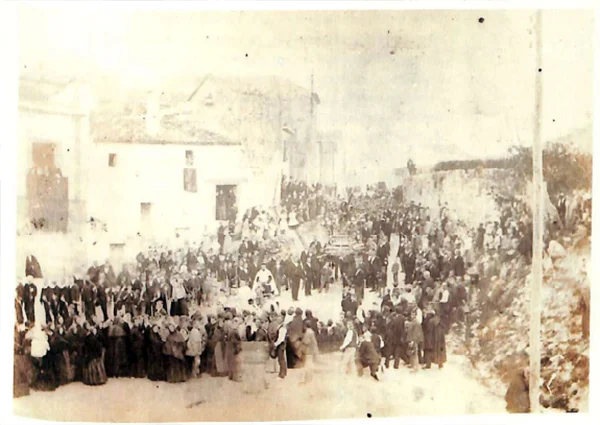
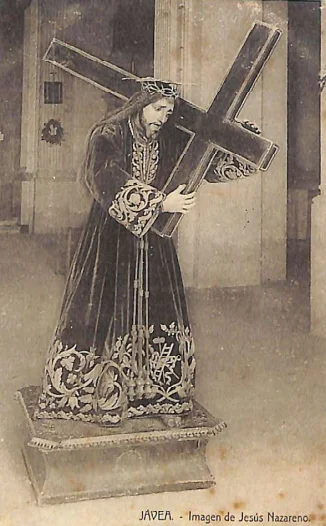
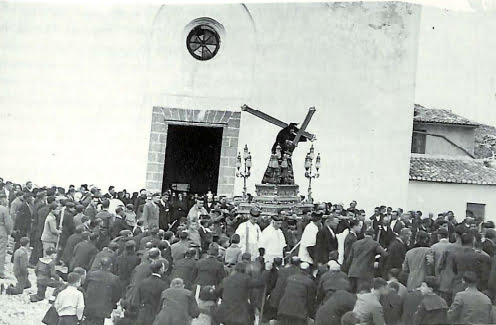
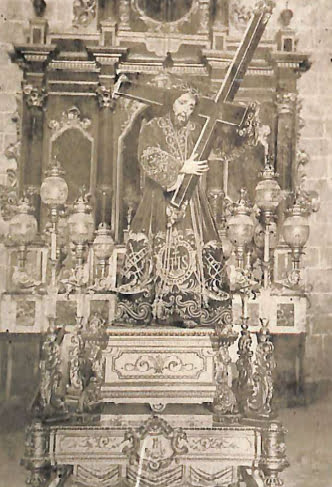
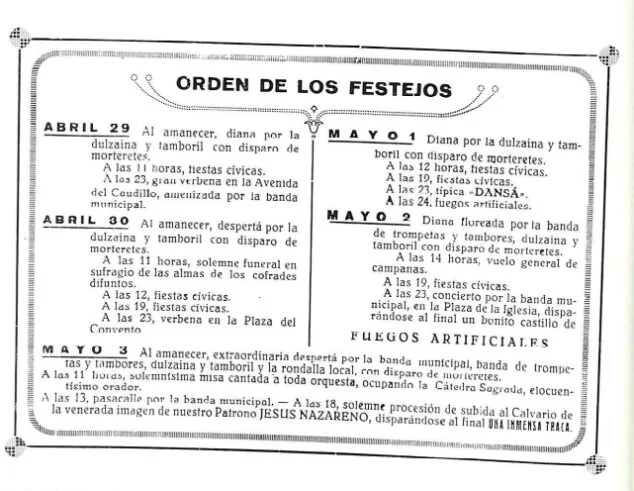
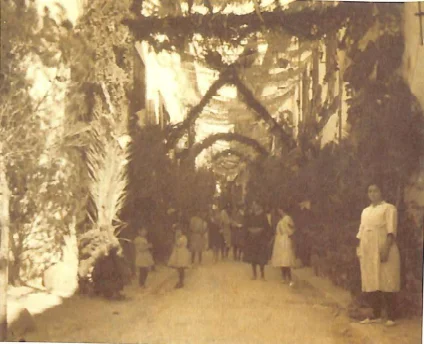
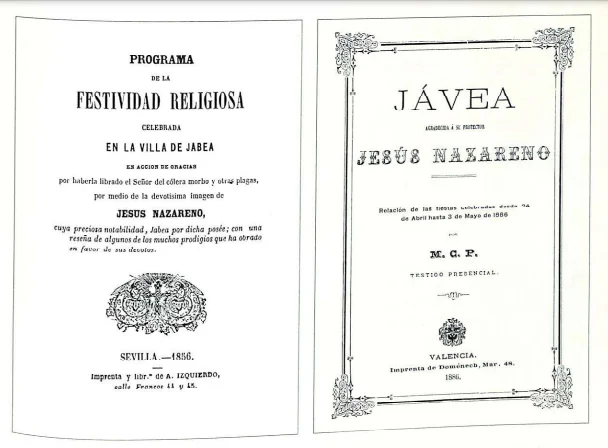
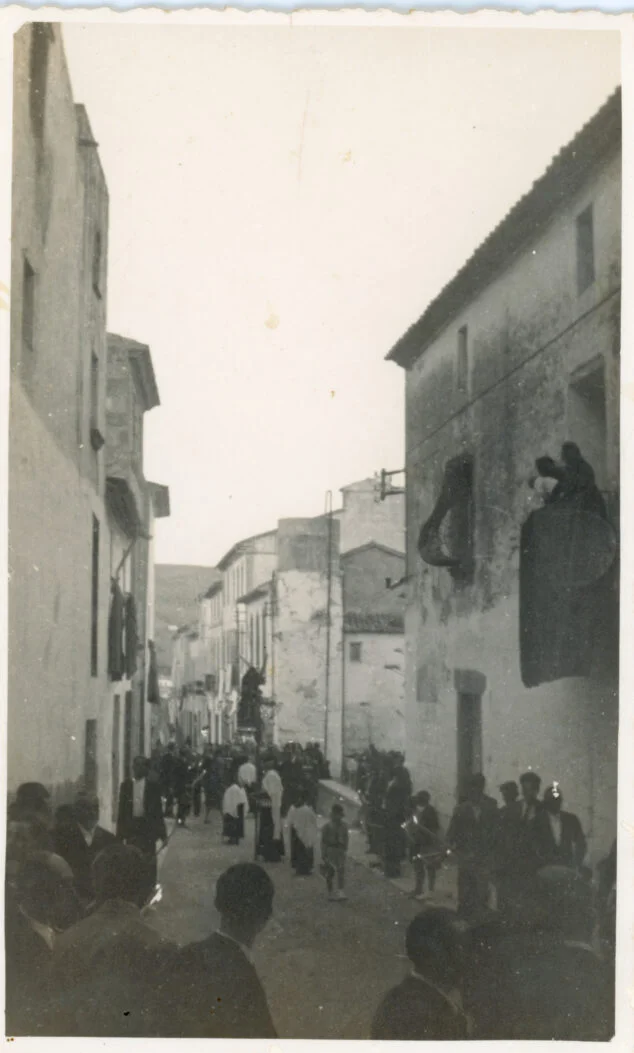

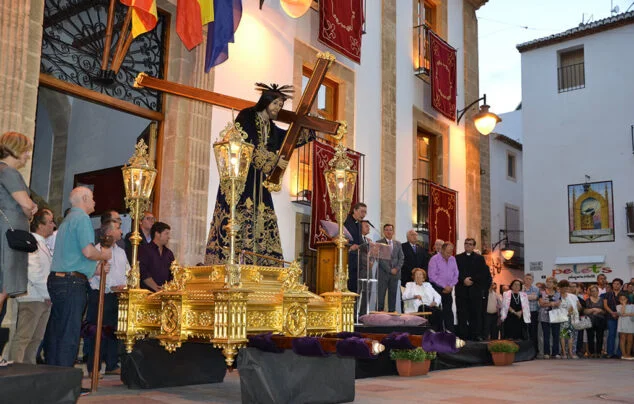
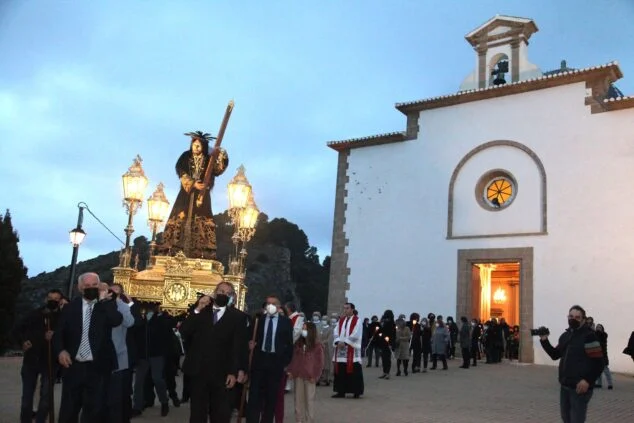
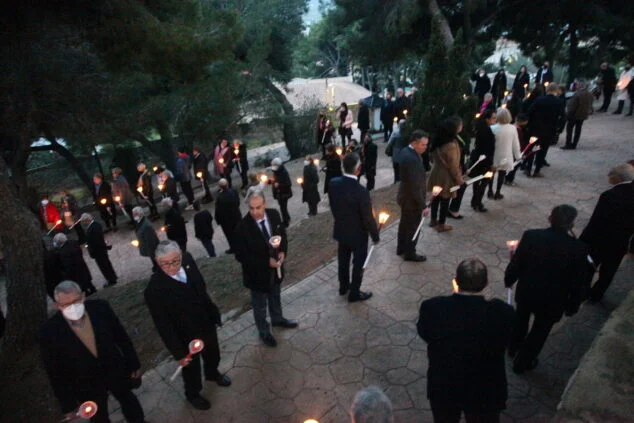
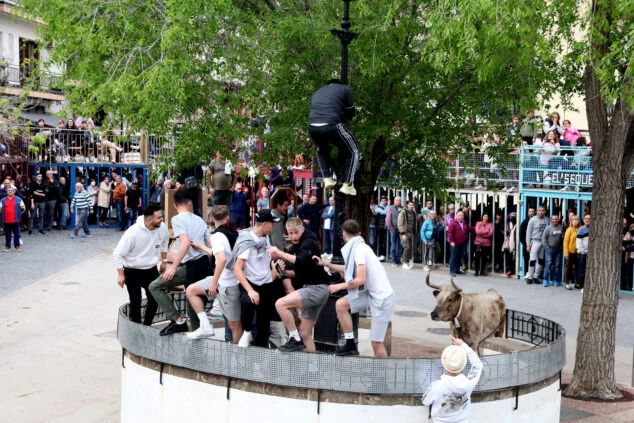
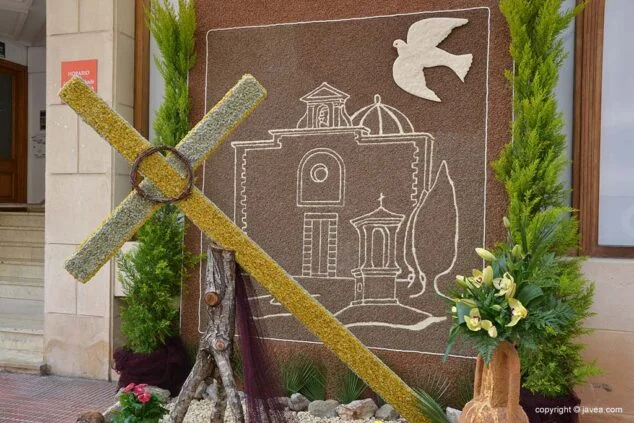
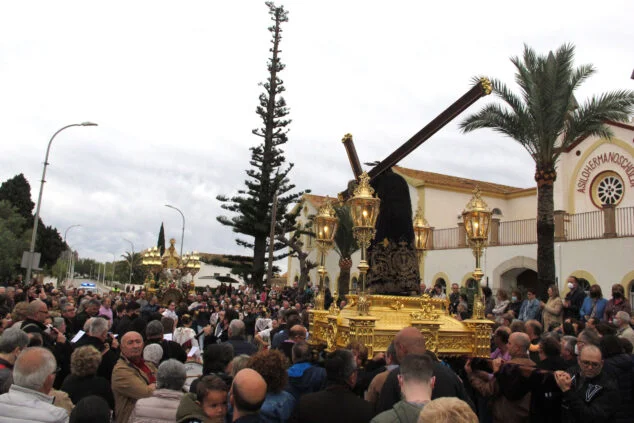
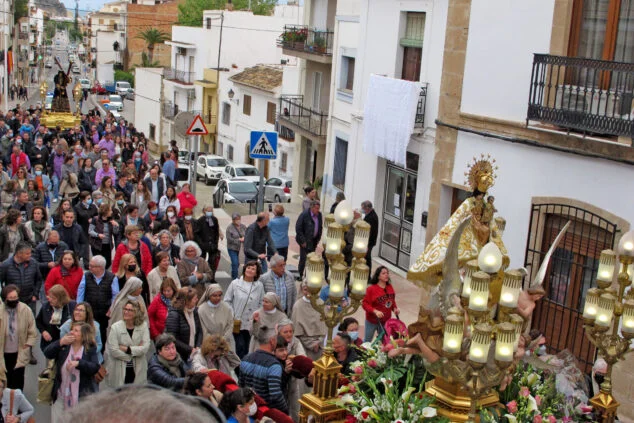
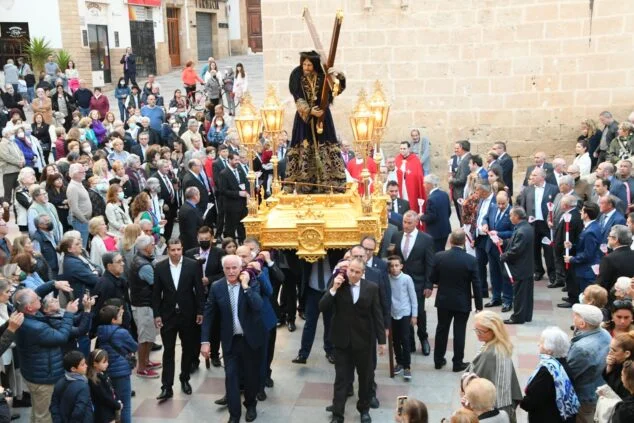
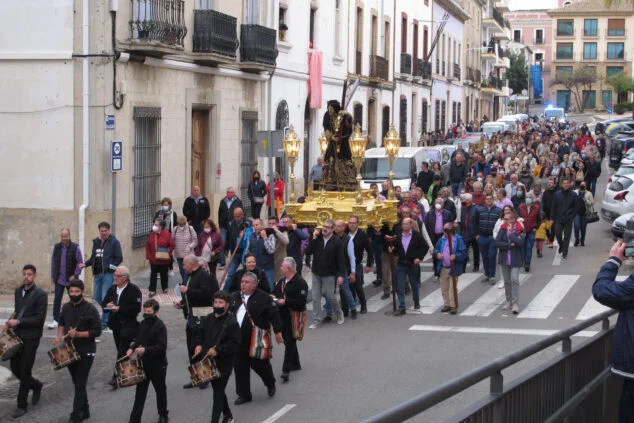
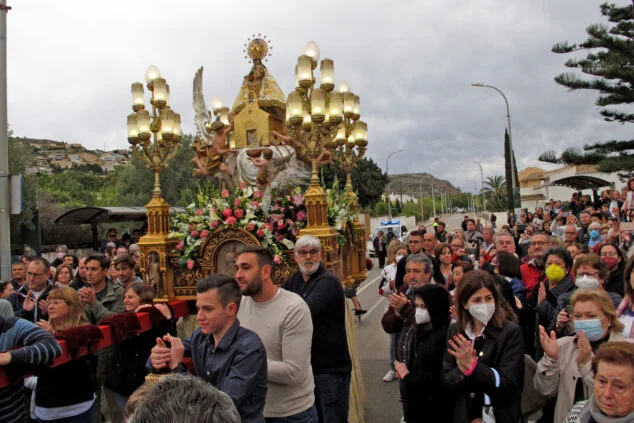
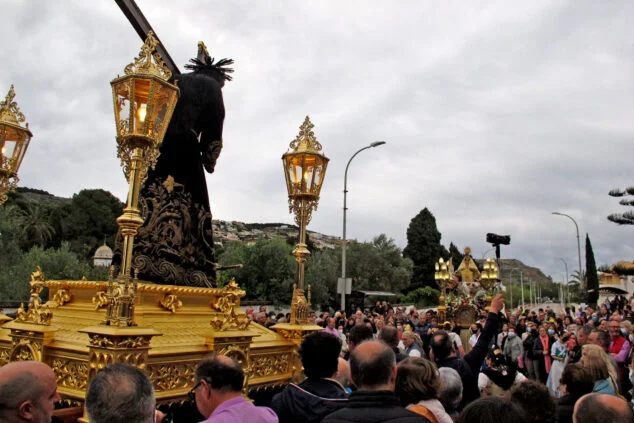
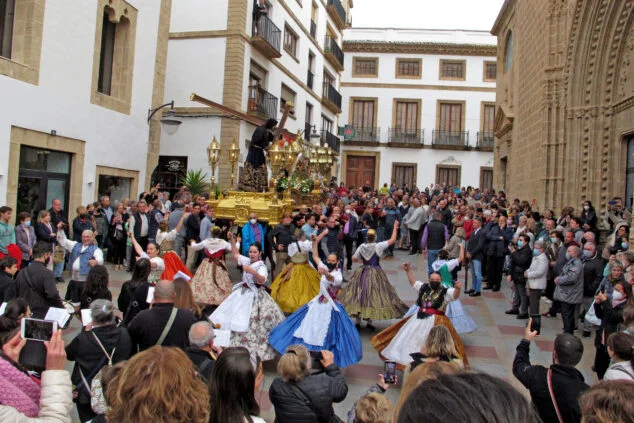

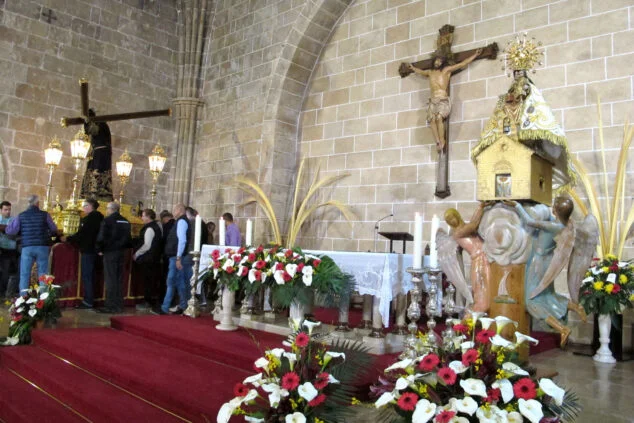
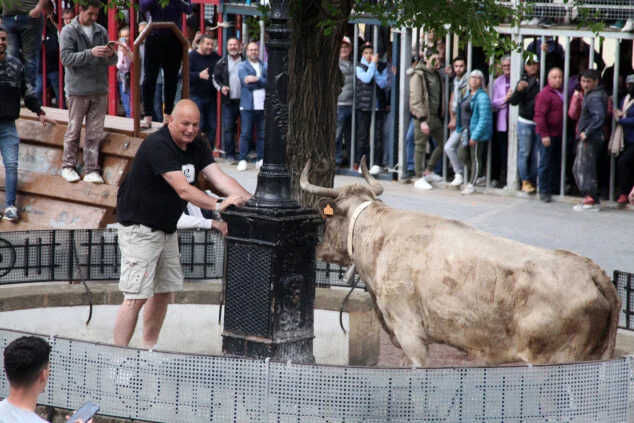
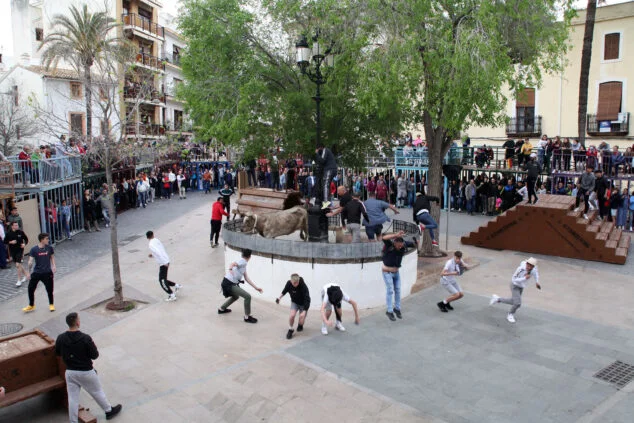

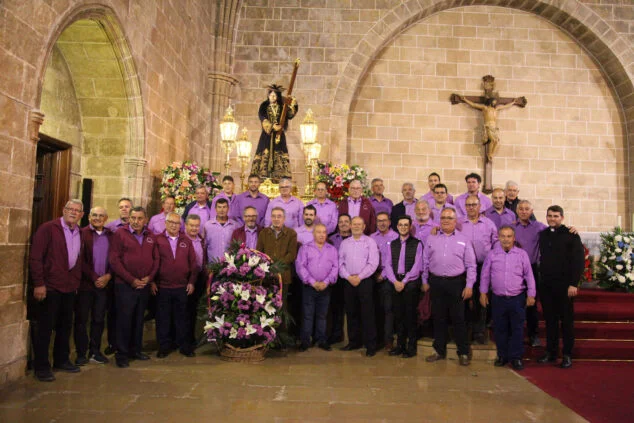
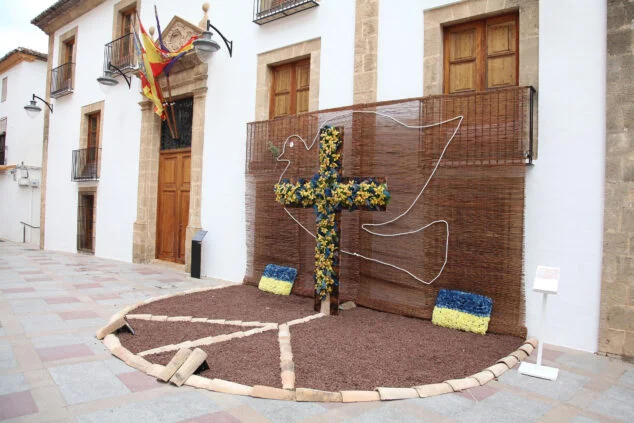
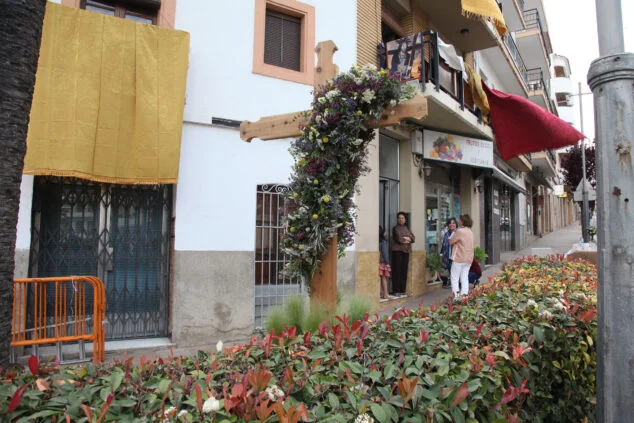
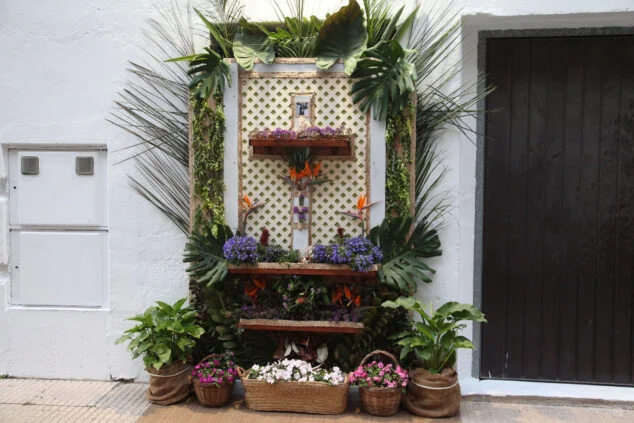
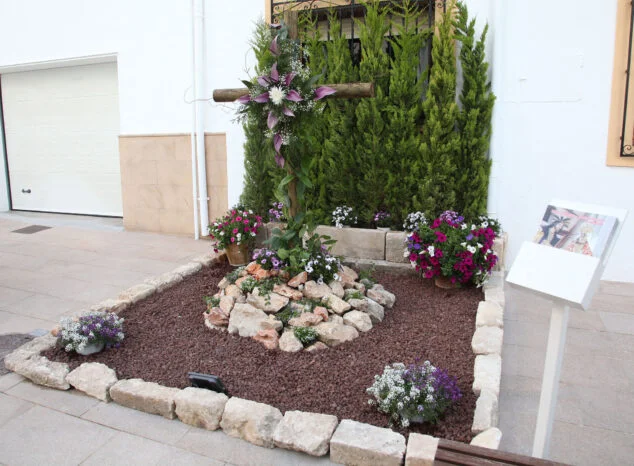
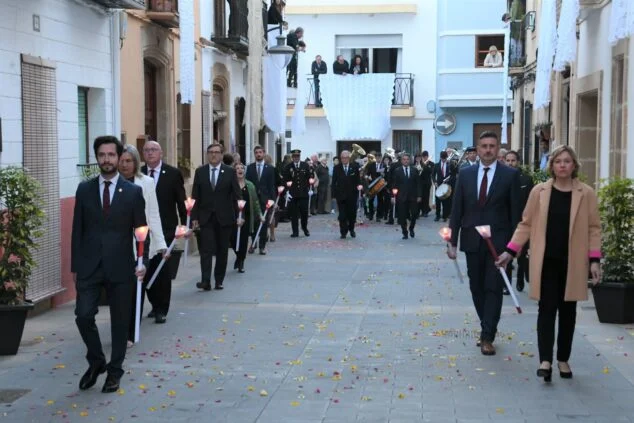
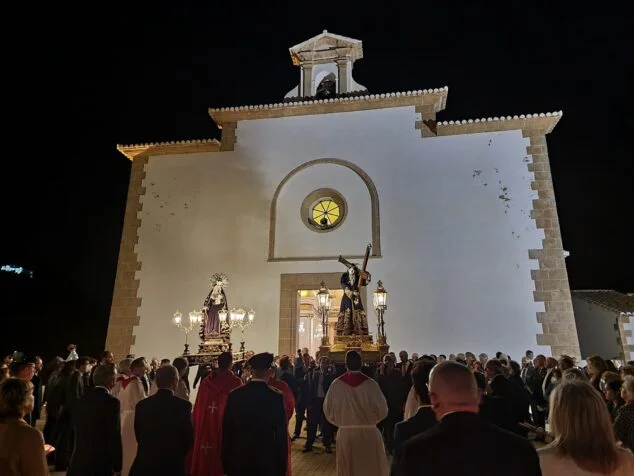


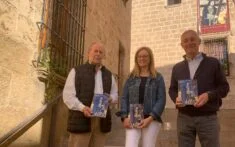

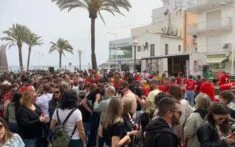
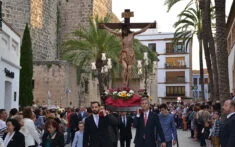
The best of all the article is to see how historically the use of Castilian prevailed both in street signs and in party posters... and of course Jávea with J...
What barbarity are we allowing!
In addition to turning a blind eye to all the English, German, Dutch etc. communities that have never been asked to speak Spanish. Don't you think so?
Oysters, what little idea you have, Francisco. If it predominates – in the 1939th century – it is due to the imposition by the via de la força after the war of succession and the Nova Planta Decrees. I mateix in the XNUMXth century, from XNUMX, when the military dictatorship ends with the efforts to recover Valencia. Per tant, eixe predomini is not «natural», but the imposition of war in both cases. That we recover the public, cultured, popular, traditional and modern of Valencia is not barbaric, but an act of justice. Ah, and you don't have to allow me, això would be missing.
Well, at the time I went to school in Javea and then to the Institute...1968 and so on...they didn't give Valencian classes...and the little I know about Valenciano is from hearing it in the street...
I remember that one year…much later suddenly everything had to be in Valenciano…in the 80s!
Clar, in 1968 continued the military dictatorship. In the 80s, the Estatuts d'Autonomia and the Llei d'Ús i Ensenyament del Valencià were approved. And no, it has not followed nor is it in Valencia, but to some the presence in the public sphere bothers them. You see why...
Interesting article to better understand the tradition. Just a nuance after the Covid pandemic. Are they also going to say that Xabia was saved from having victims so that the celebration fits better?